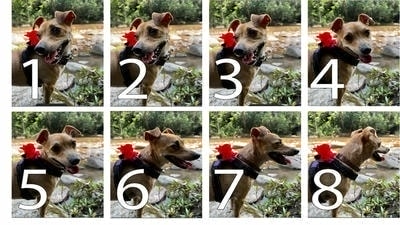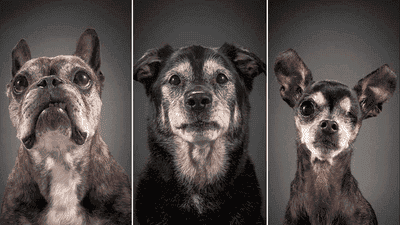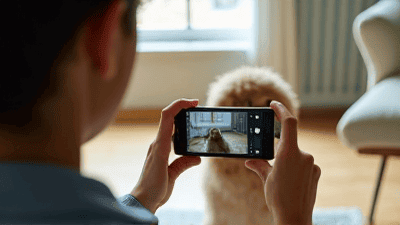How to Photograph Shy Pets: Tips for Earning Their Trust and Getting Great Shots
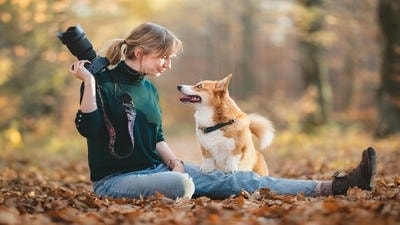
Pet photography is a wonderful way to capture the unique personalities and beauty of our furry friends. However, photographing shy pets can be a challenge. Shy animals may be hesitant to engage with a camera, unfamiliar environments, or even their owners, making it difficult to get those perfect shots. With patience, understanding, and the right techniques, you can earn their trust and create stunning photographs that showcase their true essence.
1. Understanding Shy Pets
What Makes a Pet Shy?
Shyness in pets can stem from various factors, including:
- Past Trauma: Rescue animals may have experienced abuse or neglect, leading to fear of humans or new situations.
- Lack of Socialization: Pets that haven’t been exposed to different environments, people, or animals may be more apprehensive.
- Natural Temperament: Some breeds or individual animals are naturally more reserved or cautious.
Signs of Shyness
Shy pets may exhibit behaviors such as:
- Hiding or retreating to safe spaces
- Avoiding eye contact
- Trembling or freezing
- Growling, hissing, or barking defensively
The Importance of Patience
Building trust with a shy pet takes time. Rushing the process can increase their anxiety and make it even harder to photograph them. Approach the situation with empathy and a willingness to work at their pace.
2. Earning the Trust of Shy Pets

Create a Calm Environment
Choose a quiet, familiar location for the photoshoot. Avoid loud noises or crowded spaces that could overwhelm your pet.
Use Positive Reinforcement
Reward your pet with treats, praise, or playtime for calm and cooperative behavior. This helps them associate the camera and photoshoot with positive experiences.
Take It Slow
Spend time simply being near your pet without attempting to photograph them. Let them get used to your presence and the camera equipment.
Avoid Direct Eye Contact
For shy pets, direct eye contact can feel threatening. Approach them from the side and avoid staring directly at them.
Let Them Come to You
Allow your pet to approach you on their own terms. Avoid forcing them into poses or positions they’re uncomfortable with.
3. Preparing for the Photoshoot
Choose the Right Equipment
- Camera: A DSLR or mirrorless camera with a fast shutter speed is ideal for capturing sharp images.
- Lens: A telephoto lens (70-200mm) allows you to photograph from a distance without intruding on your pet’s space.
- Tripod: A tripod can stabilize your camera and reduce movement, which is especially helpful in low-light conditions.
Set the Scene
- Use natural light whenever possible. Position your pet near a window or in a shaded outdoor area.
- Avoid harsh flashes, as they can startle shy pets. If you need additional light, use a diffused flash or continuous lighting.
- Remove clutter or distractions from the background to keep the focus on your pet.
Have Treats and Toys on Hand
Use treats, toys, or sounds to grab your pet’s attention and encourage them to look toward the camera. Be mindful not to overstimulate them.
4. Tips for Photographing Shy Pets
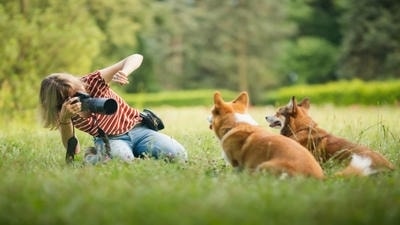
Shoot From a Distance
Maintain a respectful distance to avoid making your pet feel threatened. A telephoto lens allows you to capture close-up shots without invading their space.
Focus on the Eyes
The eyes are the window to the soul, and this is especially true for pet photography. Use a wide aperture (f/2.8 or lower) to create a shallow depth of field and highlight your pet’s eyes.
Capture Natural Behaviors
Instead of forcing poses, photograph your pet doing what they naturally do—whether it’s playing, napping, or exploring. These candid shots often reveal their true personality.
Be Patient and Persistent
Shy pets may take time to warm up to the camera. Be prepared to spend multiple sessions building trust and capturing the perfect shot.
Use Burst Mode
Burst mode allows you to take multiple shots in quick succession. This increases your chances of capturing a great expression or moment.
Work at Their Level
Get down to your pet’s eye level for a more intimate and engaging perspective. This helps you connect with them and create more impactful images.
5. Post-Processing Tips
Enhance Colors and Contrast
Adjust the brightness, contrast, and saturation to make your pet’s fur and features stand out.
Crop for Composition
Use cropping to eliminate distractions and frame your pet effectively. The rule of thirds can help create a balanced composition.
Remove Imperfections
Edit out minor imperfections, such as stray hairs or dust spots, for a polished final image.
Add a Soft Focus
A subtle blur or soft focus can add a dreamy, artistic quality to your photos.
6. Case Studies: Success Stories

Case Study 1: The Rescue Dog
A shy rescue dog named Max was hesitant around people and cameras. By spending several sessions building trust and using treats as rewards, the photographer was able to capture a series of heartfelt images that showcased Max’s gentle nature.
Case Study 2: The Nervous Cat
A nervous cat named Luna hid under furniture during her first photoshoot. The photographer used gradual exposure and a calm environment to encourage Luna to explore. Eventually, she was photographed curled up in a sunlit window, her eyes sparkling with curiosity.
Case Study 3: The Timid Rabbit
A timid rabbit named Daisy was initially fearful of the camera. The photographer used a telephoto lens and allowed Daisy to explore her surroundings at her own pace. The resulting images captured her delicate beauty and playful personality.
7. Safety and Ethical Considerations
Prioritize Your Pet’s Comfort
Never force your pet into a situation that makes them uncomfortable. If they show signs of stress, take a break or end the session entirely.
Avoid Harmful Props or Practices
Avoid using props or techniques that could harm your pet, such as tight costumes or excessive posing.
Respect Their Boundaries
Let your pet take breaks as needed. If they retreat or show signs of fear, give them space and time to relax.
8. The Rewards of Patience
Capturing Their True Personality
When you take the time to earn a shy pet’s trust, you’re rewarded with images that reflect their unique personality and beauty.
Building a Stronger Bond
The process of photographing a shy pet can strengthen your bond and deepen your understanding of their needs and preferences.
Creating Lasting Memories
These photographs become treasured keepsakes that celebrate your pet’s journey and the love you share.
Conclusion
Photographing shy pets requires patience, empathy, and a willingness to adapt to their pace. By creating a calm environment, using positive reinforcement, and respecting their boundaries, you can earn their trust and capture stunning images that showcase their true essence. Whether you’re a professional photographer or a pet owner with a camera, these tips will help you create meaningful and beautiful photographs that celebrate the unique personalities of shy pets. Remember, the journey is just as important as the final image, and the bond you build along the way is a reward in itself.



